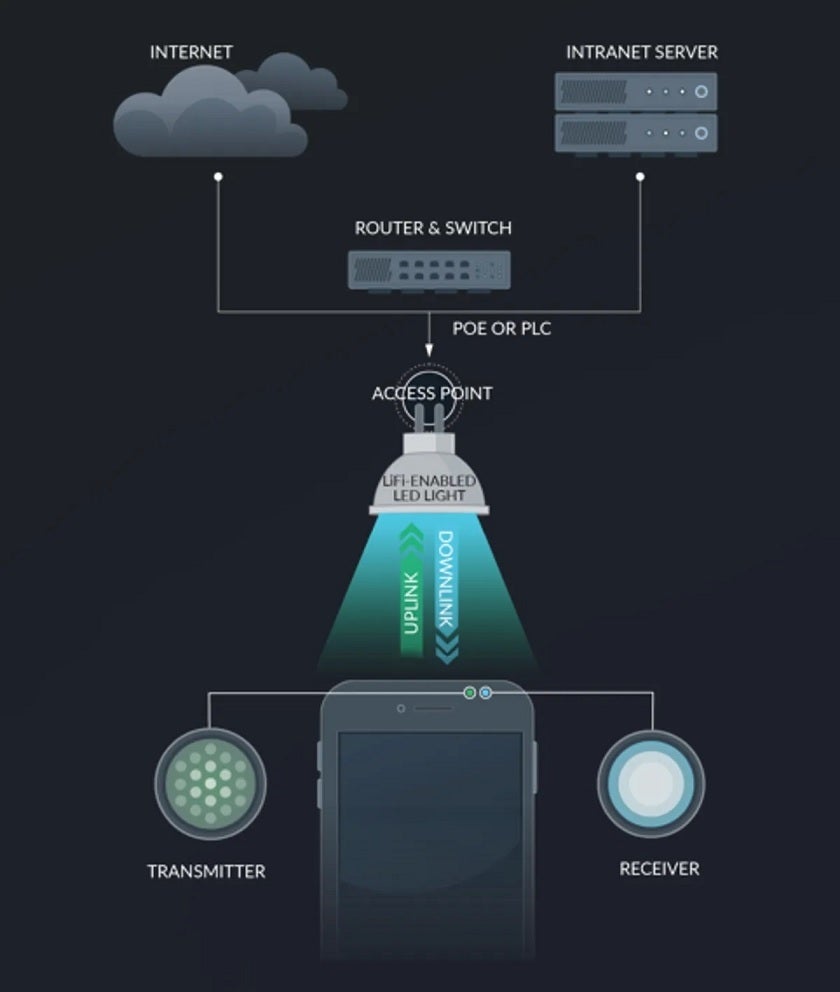Imagine a connectivity option for your phone that requires you to simply turn on a light to connect to the internet. Called Li-Fi for Light Fidelity, this technology uses light waves to transmit data as opposed to Wi-Fi which uses radio waves. The big advantage that Li-Fi has is speed; Li-Fi can deliver data speeds 100 times faster than what can be achieved using Wi-Fi. Li-Fi’s light signals are invisible to the human eye.
We already alerted you about Li-Fi a little over two years ago and it was German physicist Harald Haas who discovered that data can be transmitted and received via light. Experiments using Li-Fi began in 2008 under the lead of French company Oldecomm. When Europe sent the Ariane 6 rocket into space last month, it was charged with running four experiments including one dealing with Li-Fi.

With Li-Fi, data is transferred using LED bulbs that send the data in pulses of light similar to how Morse Code works. Besides being faster, Li-Fi is also more secure than Wi-Fi since signals are less likely to leak through walls. And Li-Fi transmitters can be installed in light fixtures making it easier for mobile users to find extremely fast internet service.
“Security is another key advantage of Li-Fi because the signals are confined to the area illuminated by the light source and cannot penetrate walls. The risk of unauthorized access is greatly reduced.”-The Li-Fi Group
Speaking of speed, Li-Fi can transmit data as fast as 224Gbps in theory compared to the 1Gbps speeds that we marvel over these days. The technology would be very useful in situations where fast speed and low latency are required. And it also produces less radiation than Wi-Fi as well.

How Li-Fi works. | Image credit-The Li-Fi Group by CNET
There are some negatives associated with Li-Fi with the biggest being that it can only be used in closed spaces. Then again, most smartphone users are connected to Wi-Fi when inside and rely on cellular connectivity when outside so this little hiccup is no big deal.
“Contrary to what we may sometimes read or hear, LiFi wasn’t created with the objective of eradicating WiFi. Above all, it’s about extending the field of possibilities in the field of telecommunication – thinking about the connectivity of today and tomorrow by freeing ourselves from the obstacles of current technologies without depriving ourselves of their benefits.”-Oldecomm
It seems that we remain several years away from seeing Li-Fi employed. One of the industry leaders in the space, Oldecomm, says that the technology should be ready between 2024-2029. What is promising is that another company, The Li-Fi Group, says that it has been in touch with businesses in several industries including consumer electronics, automotive, telecommunications, and more.
The firm adds that the growing demand for connectivity options, especially in areas where traditional technology can’t be used, will drive more companies to take a look at Li-Fi.





GIPHY App Key not set. Please check settings